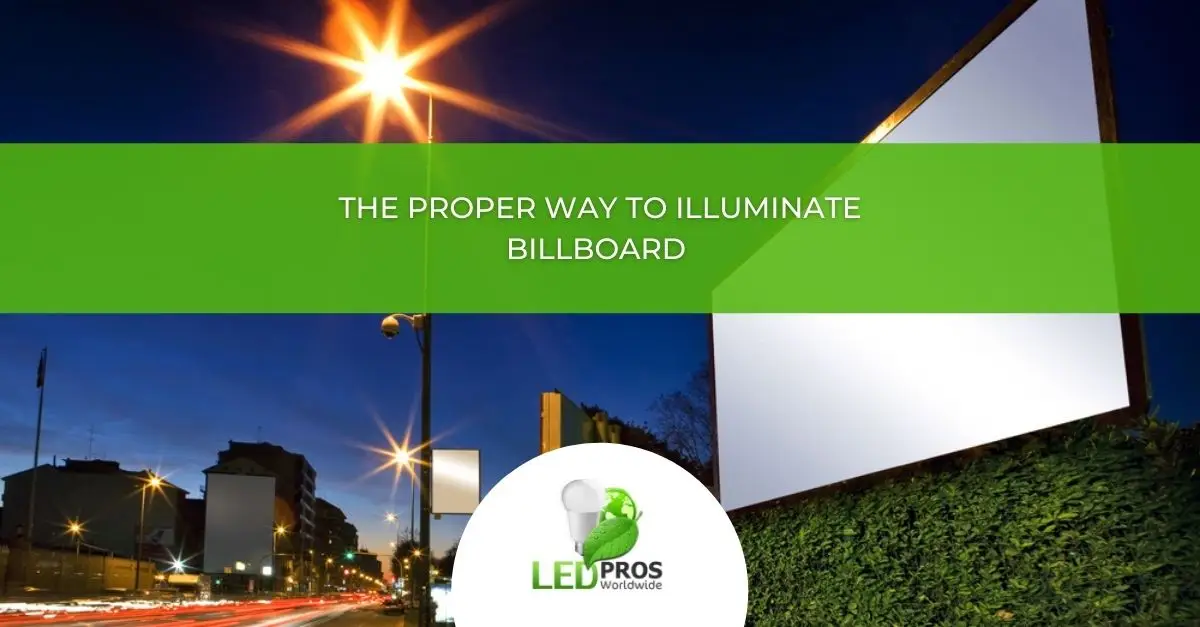Billboards are a ubiquitous part of the urban landscape, serving as powerful advertising tools that catch the eyes of passersby. However, improperly illuminated billboards can be a source of glare, light pollution, and even danger to drivers. In this article, we’ll delve into the art and science of billboard lighting, exploring the best practices for making your message shine while minimizing any negative impact on the surrounding environment.
Types of Billboards and Their Lighting Needs
Billboards come in two main varieties: traditional and digital. Each type has its own unique lighting requirements:
1. Traditional Billboards: These classic billboards rely on external lighting to illuminate the ad during the night. High-powered LED floodlights are often the go-to choice for providing sufficient illumination.
2. Digital Billboards: These modern marvels are self-illuminating, with built-in lights that adjust brightness based on ambient light levels. While they offer greater flexibility, digital billboards can still cause glare if not properly calibrated. Read more about Advertise the Right Way with LED Billboard Lights here
The Importance of Proper Billboard Lighting
Getting billboard signs right is crucial for several reasons:
– Visibility: The primary purpose of a billboard is to be seen and read. Proper lighting ensures that your message is clearly visible to your target audience.
– Safety: Poorly aimed or excessively bright lights can cause glare, making it difficult for drivers to see the road and react to traffic conditions.
– Environmental Impact: Light pollution from billboards can disrupt nearby residences, plants, and wildlife. Careful lighting design minimizes these negative effects.
Choosing the Right Lighting Fixtures
When selecting lighting fixtures for your sign, consider the following factors:
– Billboard Material: The reflectivity and texture of the billboard surface will influence the type and number of fixtures needed.
– Ambient Brightness: The surrounding environment’s light levels will dictate the intensity of the billboard lighting required.
– Light and Color Characteristics: Aim for a color temperature between 3000K and 5000K to create a warm, inviting atmosphere without compromising visibility.
Integrating Lighting with Billboard Design
For the best results, billboard lighting should be seamlessly integrated with the artwork. This is where the expertise of a lighting designer becomes invaluable. By analyzing the billboard’s design and location, a professional can develop a customized lighting plan that enhances the ad’s visual impact while minimizing any potential drawbacks.
 |
Frequently Asked Questions
What type of lighting is used for large signs?
LED floodlights are the most common choice for illuminating traditional billboards, while digital signs use built-in LED screens. Read more about Make the Most of Advertising with Billboard Lights here.
What are the standards for sign lighting?
Sign lighting standards vary by location, but generally aim to provide adequate illumination for visibility while minimizing glare and light pollution. Consult with local authorities and a professional lighting designer to ensure compliance.
How can I prevent my sign from causing light pollution?
Careful aiming of lights, using shielded fixtures, and choosing appropriate color temperatures can help minimize light pollution from signs. Regular maintenance and adjustment of lights are also important.
Solar Billboard Lights: A Bright Idea for Sustainable Advertising
In the ever-evolving world of billboard lighting, solar-powered solutions have emerged as a game-changer. By harnessing the sun’s energy, solar billboard lights offer a cost-effective and eco-friendly alternative to traditional lighting methods. Let’s shed some light on this brilliant innovation!
How Solar Billboard Lights Work
Solar billboard signs are pretty straightforward in their operation. A solar panel, typically mounted on the top of the billboard, captures sunlight during the day and converts it into electrical energy. This energy is then stored in batteries, ready to power the LED lights that illuminate the billboard at night. It’s like having a miniature power plant right on top of your ad!
The Benefits of Going Solar
Making the switch to solar sign lights comes with a host of advantages:
1. Energy Savings: By relying on the sun’s free energy, you can say goodbye to hefty electricity bills. Solar power means more money in your pocket!
2. Environmental Friendliness: Solar billboard signs reduce your carbon footprint, helping to combat climate change one ad at a time.
3. Increased Reliability: With no reliance on the grid, solar-powered billboards keep shining even during power outages. Talk about a reliable spotlight!
Considerations for Solar Billboard Lighting
Before you jump on the solar bandwagon, there are a few factors to keep in mind:
– Location: To maximize energy production, your solar panels need unobstructed access to sunlight. Shady spots just won’t cut it!
– Battery Capacity: Ensure your batteries have enough storage to power the lights through the night and during cloudy days.
– Maintenance: While solar panels are relatively low-maintenance, they do require occasional cleaning to keep them operating at peak efficiency.
Solar sign lights represent a bright future for outdoor advertising, offering a sustainable and cost-effective way to illuminate your message. By embracing this technology, you not only save on energy costs but also contribute to a greener planet. So, why not let the sun shine on your billboard? It’s a decision that’s sure to make your ad – and the environment – glow!
To Sum Up
Illuminating billboards properly is a delicate balancing act, requiring careful consideration of visibility, safety, and environmental impact. By understanding the different types of billboards, choosing the right outdoor lighting fixtures, and integrating lighting with the billboard’s design, you can create an effective and responsible advertising display. Remember, the goal is to make your message shine – not to outshine the stars or blind the passersby!
[gravityform id=”1″ title=”true” description=”true”]
